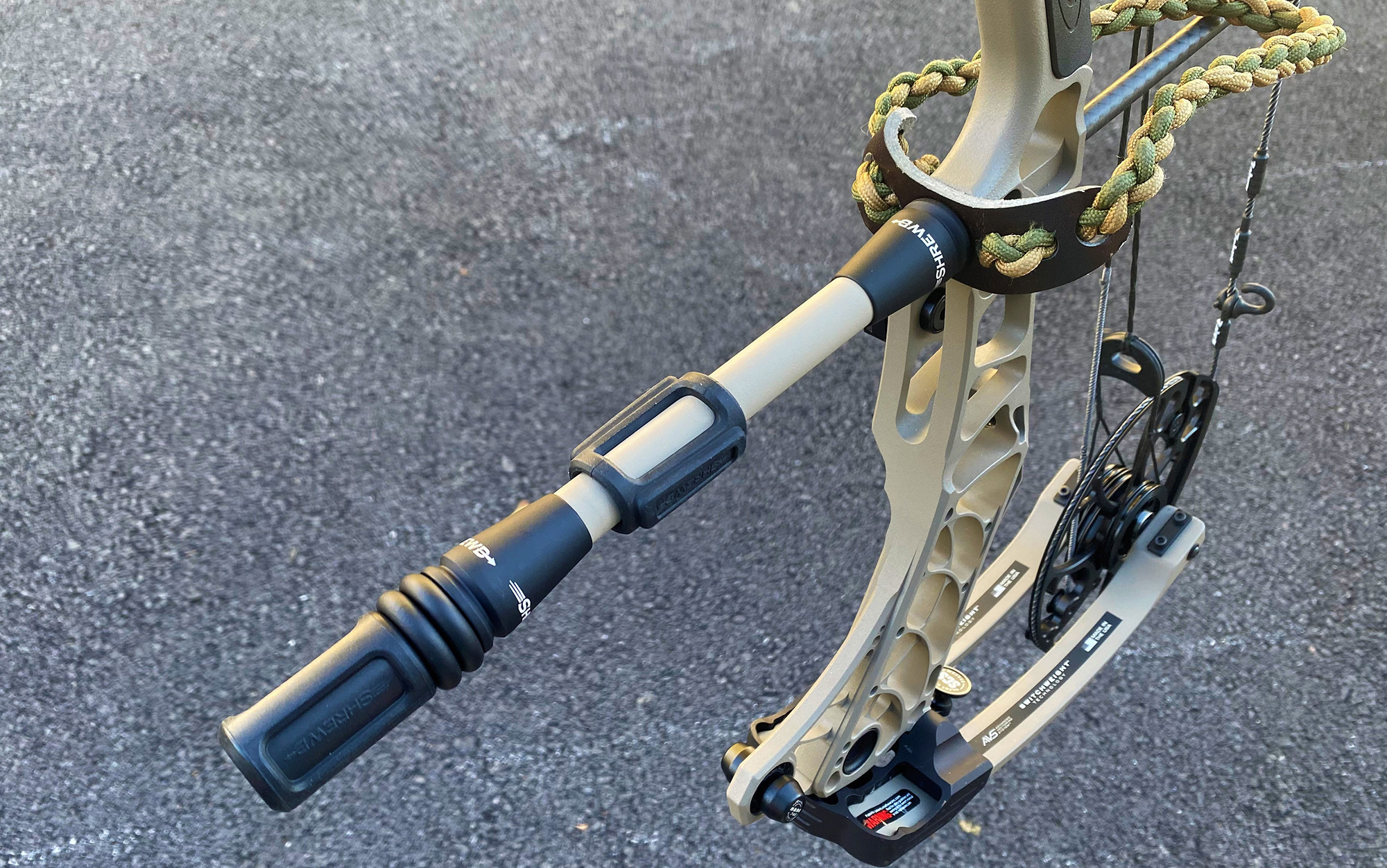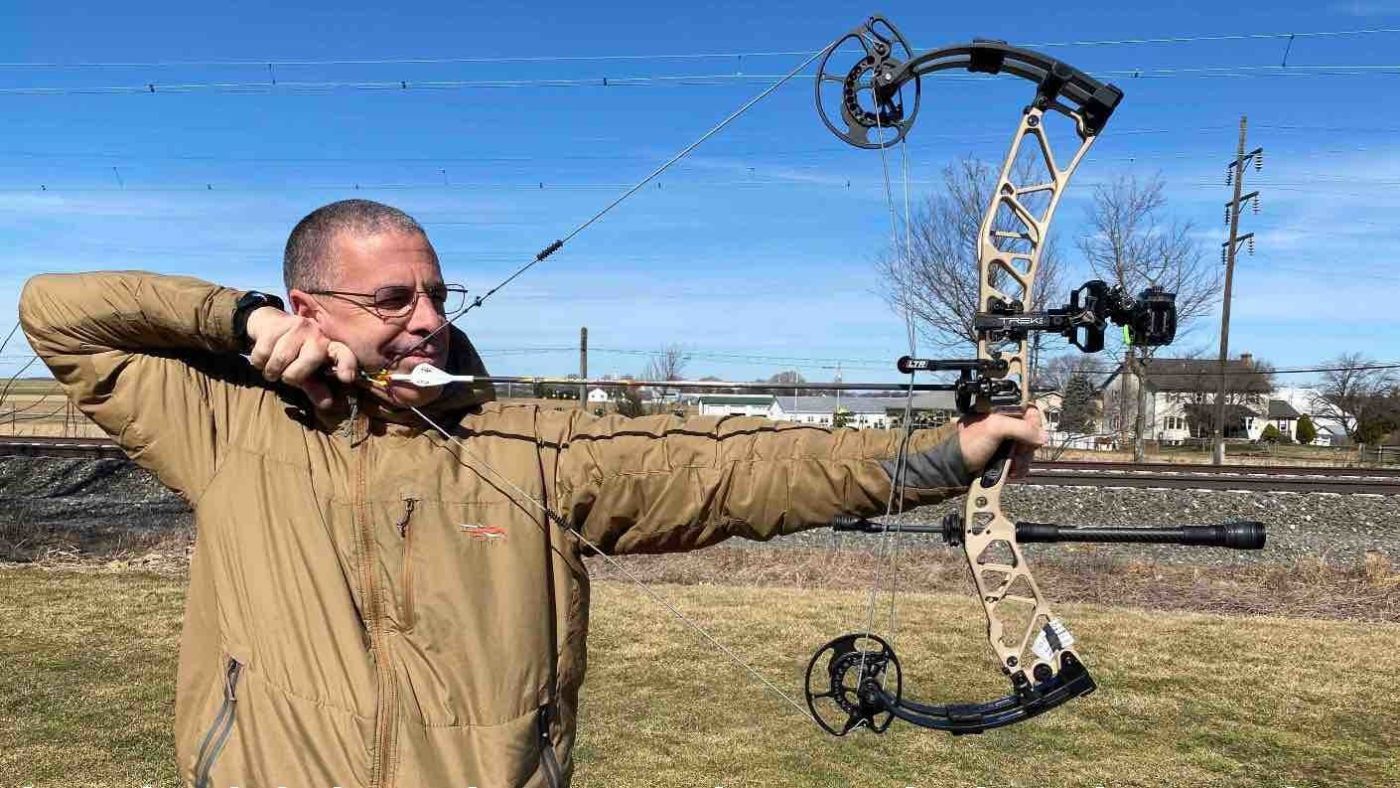How to Pick the Right Bow Stabilizer: Expert Tips and Advice
How to Pick the Right Bow Stabilizer: Expert Tips and Advice
Blog Article
Maximize Your Archery Precision With These Bow Stabilizer Methods
In the world of archery, achieving ideal accuracy is a quest that requires careful interest to detail and technique. One important element that can substantially influence your performance is the proper usage of bow stabilizers. These often-overlooked devices hold the possible to raise your shooting effectiveness to new elevations, yet only if utilized correctly. By exploring the nuanced strategies of choose, installing, and make improvements bow stabilizers, archers can unlock a realm of precision that might have previously avoided them. Whether you are an experienced archer seeking to improve your abilities or a novice anxious to enhance your precision, mastering these bow stabilizer strategies could be the trick to hitting your mark with unparalleled consistency.
Benefits of Using Bow Stabilizers
Utilizing bow stabilizers can significantly improve an archer's accuracy and overall efficiency by reducing bow torque and resonance. Bow torque, brought on by the unequal circulation of weight in the bow, can bring about inconsistencies in shot placement. By connecting a bow stabilizer, the weight is redistributed, reducing the effects of torque and aiding the archer achieve an extra constant shot. In addition, bow stabilizers dampen vibration, which not just boosts the comfort of shooting yet likewise avoids the bow from jumping upon release, thus helping in preserving proper goal.
Additionally, bow stabilizers can aid in holding the bow stable, particularly throughout windy problems or when firing from longer ranges. The added weight at the front of the bow supplies security and equilibrium, enabling the archer to concentrate on intending without the interruption of bow movement. Generally, the advantages of making use of bow stabilizers extend beyond just accuracy, improving the archer's experience and efficiency in numerous shooting situations.
Selecting the Right Bow Stabilizer
Choosing the appropriate bow stabilizer is important for enhancing your archery equipment and enhancing shooting efficiency. When choosing a bow stabilizer, there are numerous elements to consider to guarantee you find the ideal fit for your demands. To start with, think about the weight of the stabilizer. Larger stabilizers can help in reducing bow torque and absorb more vibration, resulting in a steadier objective. Lighter stabilizers supply even more maneuverability, which can be beneficial in particular shooting scenarios.

Finally, take into consideration the design of the stabilizer. Some stabilizers include flexible weights or dampeners that permit you to personalize the equilibrium and feel of your bow. Eventually, picking the right click here for info bow stabilizer involves discovering a balance in between weight, layout, product, and length to enhance your shooting precision and general performance.
Proper Installment Techniques
To make sure ideal efficiency and safety in archery, understanding correct installment techniques for your bow stabilizer is important. The very first step in mounting a bow stabilizer is to determine the right positioning on your bow. Most stabilizers are connected to the front of the riser, below the grasp, to help counterbalance the weight of devices such as quivers and views. Make certain that the stabilizer is not interfering with various other parts or hindering your capturing type.
Next, safely attach the stabilizer to the bow using the proper mounting equipment. It is essential to tighten the stabilizer snugly to avoid any wobbling during shots. Some stabilizers feature flexible weights that can be added or gotten rid of to adjust the balance of your bow. Trying out different weight configurations to locate the optimum balance that fits your capturing style.

Changing Stabilizer Weight and Length
After making sure the correct installment of your bow stabilizer, the next action includes readjusting the weight and size to optimize its performance in enhancing archery precision. The weight of the stabilizer plays an important duty in minimizing bow movement throughout the shot cycle.
When it pertains to stabilizer length, discovering the best equilibrium is essential. A longer stabilizer can offer higher stability by enhancing the distance in between the bow and the weight at the end of the stabilizer. This included range improves the stabilizing impact, particularly in gusty problems or when contending longer ranges. Alternatively, a shorter stabilizer provides much more maneuverability and might be favored by archers that value agility and quick movements during capturing.
Advanced Stabilizer Tuning Tips
Achieving optimal bow stability and precision in archery demands a nuanced method to sophisticated stabilizer tuning. Advanced stabilizer tuning entails fine-tuning different elements to improve the bow's balance, reduce resonance, and boost total accuracy. One crucial strategy is to explore various stabilizer configurations, consisting of back-bar and side-bar configurations, to find the suitable balance between security and ability to move for your capturing style. bow stabilizer. Additionally, changing the angle and positioning of the stabilizer can have a considerable effect on exactly how the bow reacts upon launch.
An additional essential element of advanced stabilizer adjusting is maximizing the damping residential or commercial properties of the stabilizer system. This can be accomplished by integrating extra dampening accessories such as rubber dampeners or harmonic stabilizers to better reduce vibration and sound. Checking out various products for the stabilizer building, such as carbon fiber or aluminum, can additionally influence the bow's performance by altering its weight distribution and news tightness. By diligently make improvements these sophisticated stabilizer aspects, archers can optimize their accuracy and uniformity on the array or in competition.
Conclusion
To conclude, making best use of archery accuracy can be achieved with the appropriate option, installment, and modification of bow stabilizers. By comprehending the advantages of making use of stabilizers, selecting the appropriate one, and fine-tuning its weight and length, archers can boost their shooting precision. Employing advanced tuning techniques can better improve security and uniformity in arrowhead flight. Overall, integrating bow stabilizers right into archery practice can cause better performance and increased precision.
Utilizing bow stabilizers can substantially enhance an archer's accuracy and total performance by minimizing bow torque and resonance. Longer stabilizers offer higher stability and balance, especially for long-distance capturing, while much shorter stabilizers provide more convenience and are less complicated to navigate in limited rooms (bow stabilizer). Carbon fiber stabilizers are sturdy and lightweight, while light weight aluminum stabilizers are durable and supply outstanding resonance dampening
A longer stabilizer can provide higher security by increasing the range between the bow and the weight at the end of the stabilizer.An additional vital facet of innovative stabilizer adjusting is optimizing the damping properties of the stabilizer system.
Report this page